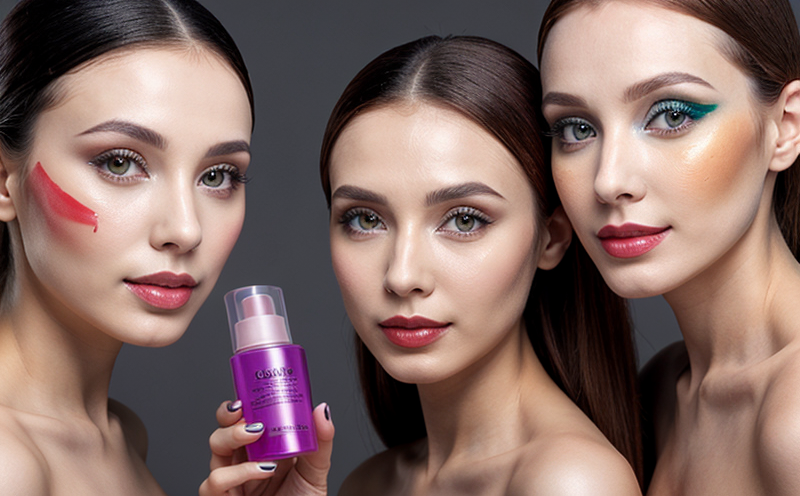Carcinogenicity Testing of Cosmetic Chemicals
Understanding and ensuring the safety of cosmetic products is paramount in today’s market. The carcinogenicity testing of cosmetic chemicals plays a crucial role in this regard by evaluating whether specific ingredients or formulations might cause cancer when exposed to human tissues. This service is essential for quality managers, compliance officers, R&D engineers, and procurement professionals who are responsible for ensuring product safety and regulatory compliance.
The International Organization for Standardization (ISO) defines carcinogenicity testing as a series of experiments designed to assess the potential of chemicals or mixtures to cause cancer in living organisms. In the context of cosmetics, these tests ensure that no harmful substances are inadvertently used in formulations. The U.S. Food and Drug Administration (FDA) and European Union regulations mandate that certain cosmetic ingredients undergo such rigorous testing.
The testing process typically involves multiple stages aimed at assessing different aspects of carcinogenic potential:
- Short-term toxicity tests on cell cultures
- Animal studies using rodents or other test animals
- In vitro and in vivo assays to evaluate mutagenicity, genotoxicity, and overall carcinogenic risk.
The specific tests conducted depend on the type of chemical and its intended use. For instance, preservatives like parabens often require thorough evaluation due to their widespread use and potential for prolonged exposure. By conducting these tests early in the product development cycle, companies can avoid costly rework later and ensure compliance with global standards.
It’s important to note that while animal testing remains a cornerstone of carcinogenicity assessments, there is an increasing push towards more humane alternatives such as cell-based assays and computational models. However, these methods are still in the developmental stages and may not yet be accepted for regulatory purposes in all regions. Therefore, companies must carefully choose their testing partners to ensure that they comply with both current regulations and future trends.
The results of carcinogenicity tests provide critical data that help formulate informed decisions about product safety. This information is vital for quality managers who oversee the production process, ensuring that only safe ingredients are used in cosmetic formulations. Compliance officers rely on these test outcomes to stay ahead of regulatory changes and maintain a competitive edge by avoiding non-compliant products.
For R&D engineers, carcinogenicity testing offers valuable insights into material selection and formulation design. By understanding the potential risks associated with various chemical compounds, they can innovate safer products that meet both consumer expectations and legal requirements. In the procurement department, this service ensures that suppliers provide only high-quality ingredients free from harmful contaminants.
Why It Matters
Consumer health and safety are at the forefront of every cosmetic company’s priorities. Carcinogenicity testing is one of the key strategies employed to safeguard against potential risks associated with certain chemicals found in cosmetic products. This service ensures that companies adhere to stringent international standards set by organizations like ISO, ASTM, EN, IEC, and FDA.
The importance of carcinogenicity testing cannot be overstated due to its direct impact on public health. Every year, millions of people use cosmetics, making it essential to eliminate any substances that could pose a cancer risk. Regulatory bodies worldwide have implemented strict guidelines to protect consumers from harmful ingredients. For instance, the EU’s Cosmetics Regulation requires all cosmetic products placed on the market after July 2013 to undergo rigorous safety assessments.
Failure to comply with these regulations can lead to severe consequences, including product recalls, legal actions, and damage to brand reputation. Therefore, investing in comprehensive carcinogenicity testing is not just a compliance requirement but also a strategic business decision that enhances consumer trust and loyalty. By demonstrating a commitment to safety, companies can build stronger relationships with their customers and maintain a positive image in the marketplace.
Moreover, staying ahead of regulatory changes by proactively conducting carcinogenicity tests allows businesses to anticipate future requirements and adapt their practices accordingly. This foresight ensures that cosmetic products remain safe even as new research emerges or international standards evolve.
International Acceptance and Recognition
- ISO 10759:2004 outlines guidelines for the in vitro test systems used to assess genotoxicity, which is a critical component of carcinogenicity testing.
- The JECFA (Joint FAO/WHO Expert Committee on Food Additives) evaluates and recommends acceptable levels of certain chemicals in cosmetics based on safety data.
- In the EU, the Cosmetics Regulation mandates that all cosmetic products undergo rigorous safety assessments before being placed on the market. This includes carcinogenicity testing for specific ingredients.
- The FDA’s Regulations Governing Cosmetics specify the requirements for ensuring the safety of cosmetics in the United States, including mandatory carcinogenicity testing where necessary.
These international standards and regulations underscore the importance of rigorous testing protocols. Compliance with these guidelines not only ensures product safety but also facilitates easier market entry into numerous countries around the world. By adhering to these standards, cosmetic companies can avoid costly delays in certification processes and maintain a consistent global presence.
Competitive Advantage and Market Impact
In an increasingly competitive market, ensuring product safety is no longer just a legal requirement—it’s a strategic imperative. Companies that invest in comprehensive carcinogenicity testing gain several advantages over their competitors:
- Enhanced Consumer Trust: Demonstrating a commitment to consumer health and well-being builds strong brand loyalty.
- Facilitated Market Entry: Compliance with international standards simplifies the process of entering new markets.
- Reduced Legal Risks: Avoiding non-compliant products minimizes the risk of legal actions and product recalls.
- Innovation Opportunities: Understanding potential risks allows for safer, more innovative formulations.
By prioritizing carcinogenicity testing, cosmetic companies can differentiate themselves in the eyes of consumers and regulatory bodies. This proactive approach not only protects their reputation but also positions them as leaders in product safety and innovation within the industry.





